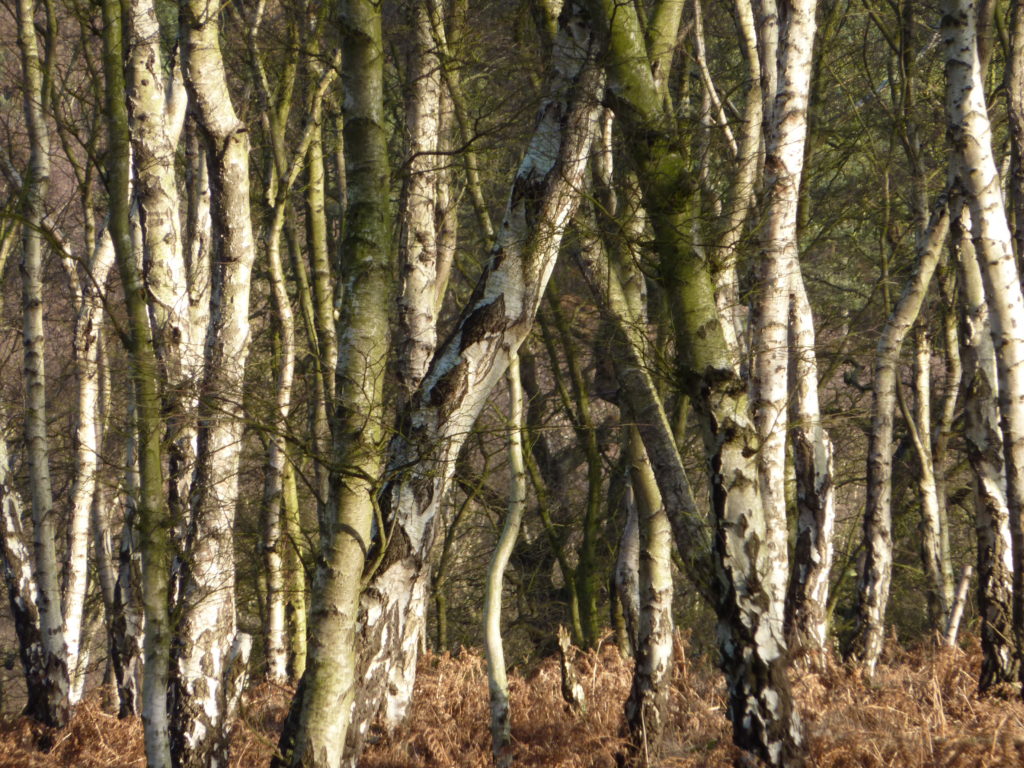
After all the native, short, flowering plants, this time a blog on the native, tall, woody trees called Betulaceae, which includes the main genus, Betula or Birch but also our native Alder, Hornbeam and Hazel belong in this family.
The Betulaceae or Birch Family is number 59 in Stace and has 3 straight native species of Birch as well as several hybrids, subspecies and introduced, ornamental varieties.
The birch is a typical pioneer, which means it can colonize new land very rapidly in the right conditions and can therefore be seen as a weed by some who wouldn’t like them to do this!
But most of us can agree that the Birch tree is very beautiful and hoping for you to learn in the following text that it is also a very useful tree as are its cousins, Alder, Hornbeam and Hazel about which I will tell you more in the second part!
Pictures by Matt Summers unless stated.
Contents
Betula pendula or Silver Birch
B. pubescens or Downy Birch
B. × aurata (Betula pendula × pubescens) or Hybrid Birch
B. nana or Dwarf Birch
The three species we know here in Britain are:
Betula pendula or Silver Birch
A deciduous tree found as even-aged stands or in mixed woodland on a wide range of light, well-drained, particularly acidic soils. It can rapidly colonize open, disturbed ground, particularly burned areas, and open heathland. It is also widely planted on roadsides and in parkland. Generally below 400 m; at higher altitudes it tends to be replaced by B. pubescens.
The Ecology:
The silver birch has an open canopy which allows plenty of light to reach the ground. This allows a variety of mosses, grasses, and flowering plants to grow beneath, which in turn attract insects.
Flowering plants often found in birch woods include primrose (Primula vulgaris), violet (Viola riviniana), bluebell (Hyacinthoides non-scripta), wood anemone (Anemone nemorosa), and wood sorrel (Oxalis acetosella).
Small shrubs that grow on the forest floor include blueberry (Vaccinium myrtillus) and cowberry (Vaccinium vitis-idaea). Birds found in birch woodland include the chaffinch, tree pipit, willow warbler, nightingale, robin, woodcock, redpoll, and green woodpecker.

- The branches of the silver birch often have tangled masses of twigs known as witch’s brooms growing among them, caused by the fungus Taphrina betulina.
- Old trees are often killed by the decay fungus Piptoporus betulinus and fallen branches rot rapidly on the forest floor.
- This tree commonly grows with the mycorrhizal fungus Amanita muscaria in a mutualistic relationship. This applies particularly to acidic or nutrient-poor soils.
- Other mycorrhizal associates include Leccinum scabrum and Cantharellus cibarius. In addition to mycorrhiza, the presence of microfauna in the soil assists the growth of the tree, as it enhances the mobilization of nutrients.
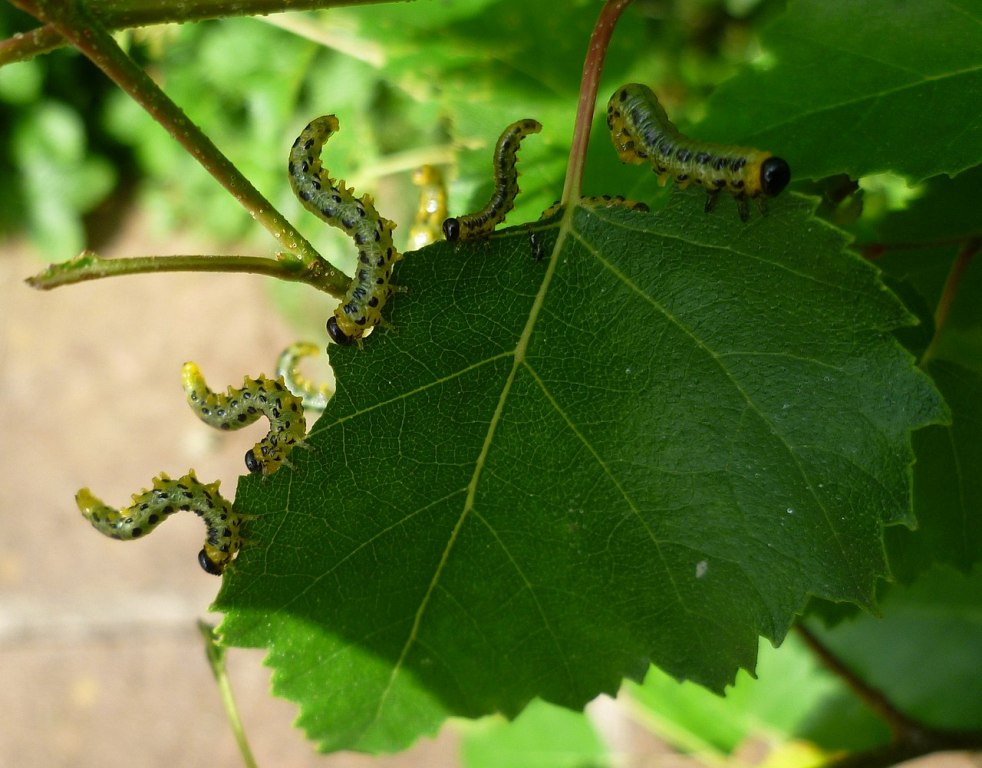
Birch sawfly (Craesus septentrionalis) larvae feeding on silver birch, West Wales, July 2014 (by Tony Holkham in Wikipedia)
- The larvae of a large number of species of butterflies, moths, and other insects feed on the leaves and other parts of the silver birch. In Germany, almost 500 species of insects have been found on silver and downy birch including 106 beetles and 105 lepidopterans, with 133 insect species feeding almost exclusively on birch.
- Birch dieback disease can affect planted trees, while naturally regenerated trees seem less susceptible. This disease also affects B. pubescens and in 2000 was reported at many of the sites planted with birch in Scotland during the 1990s.
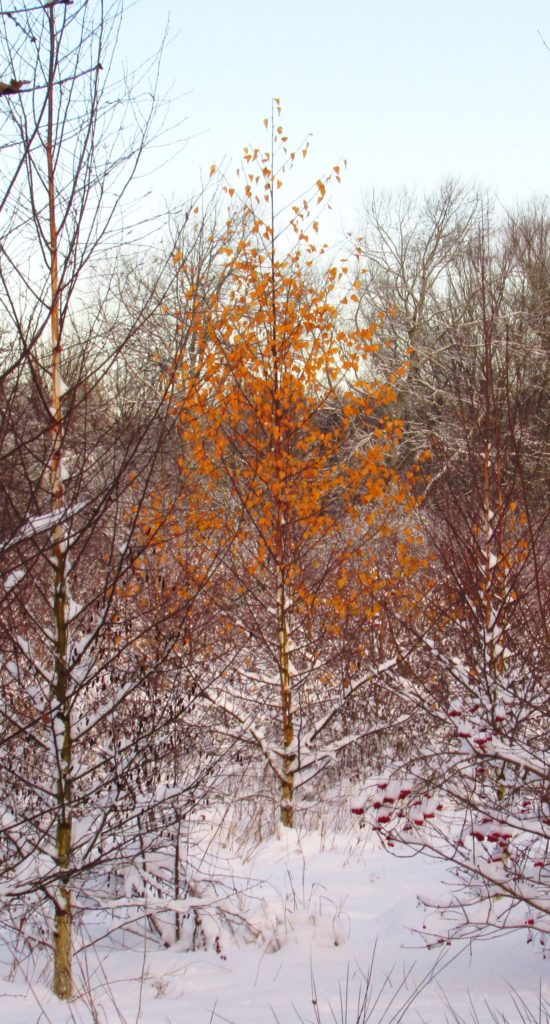
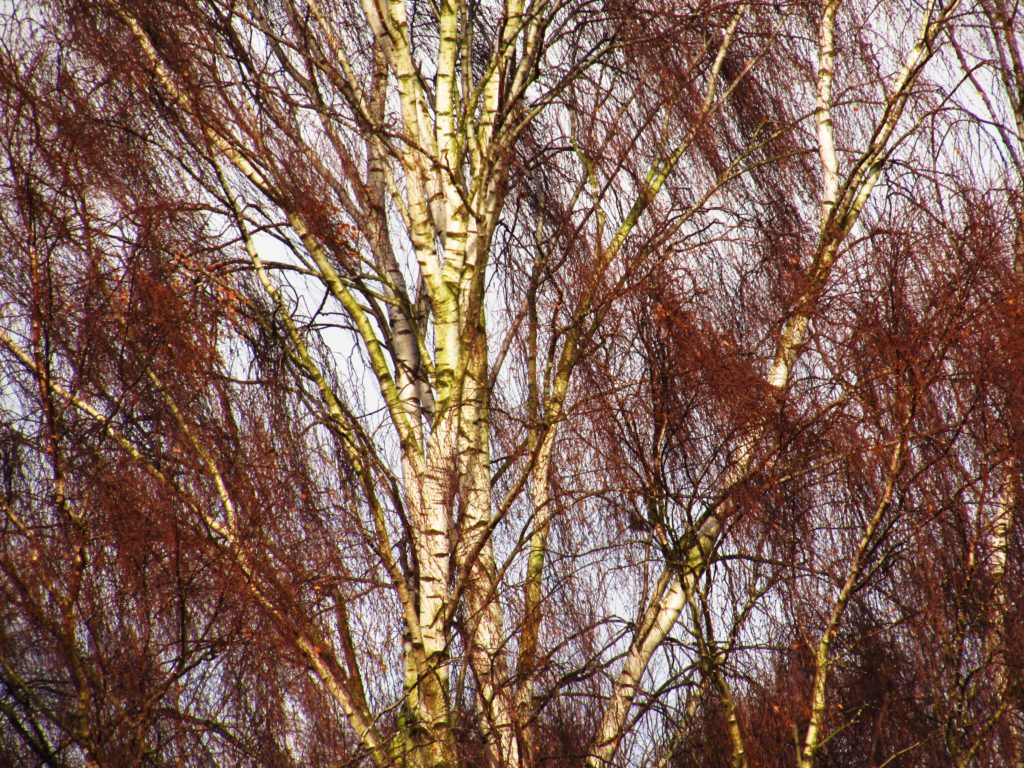
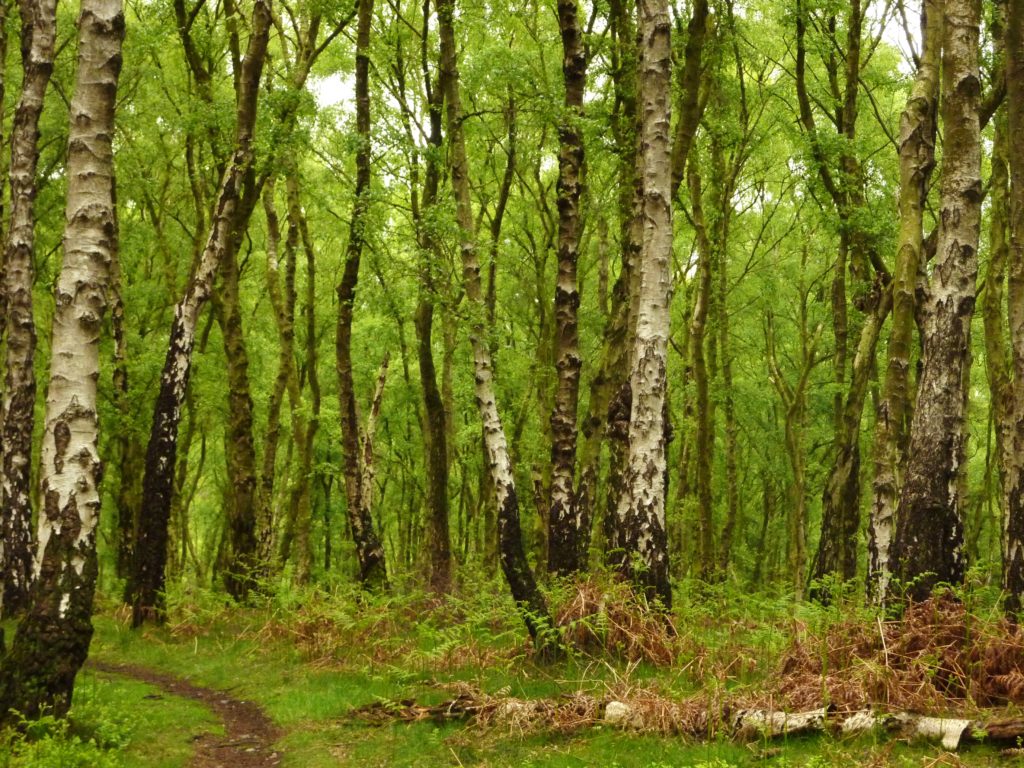
It is an attractive ornamental tree, especially during the winter months, the silver birch is often planted therefore in parks and gardens, grown for its white bark, open airy habit and gracefully drooping shoots. The young foliage is light green in early spring and a butter yellow in autumn.
The many uses of birch:
In Scandinavia and other regions of northern Europe, it is grown for:
- forest products such as lumber and pulp, and ecosystem services.
- It is sometimes used as a pioneer and nurse tree, to help the growth of longer standing trees.
Silver birch wood is pale in colour with no distinct heartwood and is used in making;
- furniture, plywood, veneers, parquet blocks, skis, and kitchen utensils, and in turnery.
- It makes a good firewood that produces a good heat when burnt, but is quickly consumed by the flames.
- Slabs of bark are used for making roof shingles and
- strips are used for handicrafts such as wooden footwear and small containers.
- Historically, the bark was used for tanning.
- Bark can be heated and the resin collected; the resin is an excellent waterproof glue and useful for starting fires.
- The thin sheets of bark that peel off young wood contain a waxy resin and are easy to ignite even when wet.
- The dead twigs are also useful as kindling for outdoor fires.
- Birch brushwood is used for racecourse jumps and besom brooms.
- In the spring, large quantities of sap rise up the trunk and this can be tapped. It contains around 1% sugars and can be used in a similar way to maple syrup, being drunk fresh, concentrated by evaporation, or fermented into a “wine”.
- In Sweden, the bark of birch trees was ground up and used to make bark bread, a form of famine food. The removal of bark was at one time so widespread that Carl Linnaeus expressed his concern for the survival of the woodlands.
- I personally use the young, black twiggy stems in Christmas wreaths as they are very ornamental.
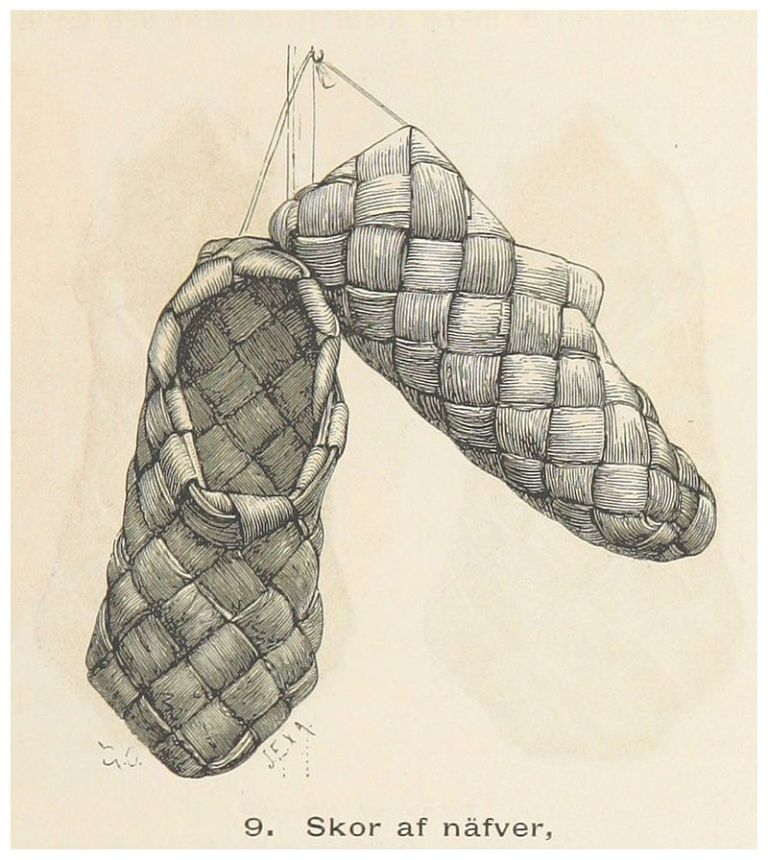
A pair of Finnish traditional shoes woven from strips of birch bark (Public Domain, Wikipedia)
The silver birch is Finland’s national tree. Leafy, fragrant boughs of silver birch (called vihta or vasta) are used to gently beat oneself in the Finnish sauna culture.
The strong and water-resistant cardboard-like bark can be easily cut, bent, and sewn, which has made it a valuable building, crafting, and writing material, since pre-historic times.
Even today, birch bark remains a popular for various handicrafts and arts.
Birch bark also contains substances of medicinal and chemical interest. Some of those products (such as betulin) also have fungicidal properties.
From the Medicinal Flora:
It is a tree of Magic for the Nordic peoples, which is not surprising considering its versatility!
Birch oil has other applications as well as the medicinal and is a constituent of Russian Ointment, which is applied to stiff muscles and joints.
As an internal remedy it is hardly used in Britain and, just in this sense, we should bring back the Birch.
Parts used: The leaves, harvested in March to July; the buds, bark and sap are harvested in the spring. Various parts of the wood are used in birch tar preparations.
Action: Diuretic, diaphoretic, anti inflammatory, anti-micrbal, astringent, analgesic (not potent but useful in combination). Said to improve renal uric acid excretion.
Uses: Kidney and urinary tract infections. Albuminaria, oligaria. Oedema associated with poor renal function and low cardiac output. Gout, renal colic . Rheumatic pain (both internally & externally). Aids in the healing of wounds, sores and ulcers.
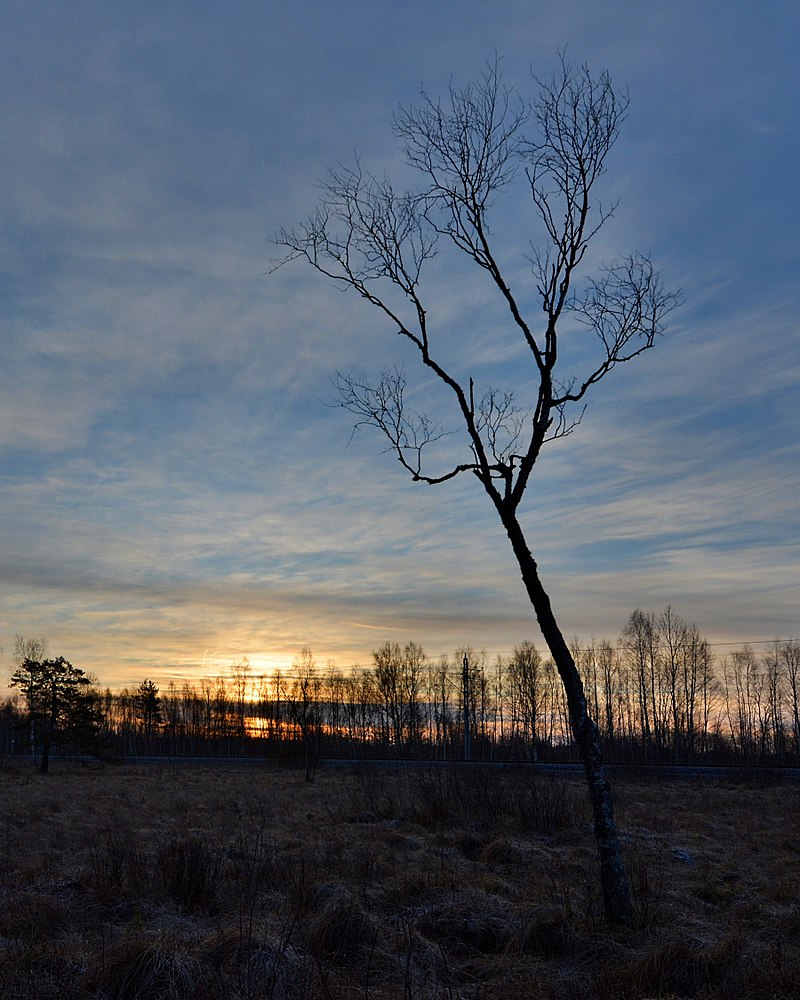
B. pubescens or Downy Birch
A deciduous tree, usually found in mixed woodland or as isolated trees on roadsides and field boundaries, and more frequent than B. pendula across almost all of Ireland, Scotland (except the east), Wales, north-western and parts of south-western England. Beyond the range of Quercus and B. pendula in northern Scotland, it forms single-species woodland.
It grows on a wide range of soils but prefers more acidic, wetter, peatier soils, especially in the uplands, and even grows on raised bogs. It can rapidly colonize open, unshaded ground, particularly burned areas, open heathland and cut-out peat bogs. It is also widely planted, though less so than B. pendula.
The bark can be brown, grey or white but rarely white with strongly contrasting black fissures below and the twigs in mature trees usually are not pendent.
Ecology:
The larva of the autumnal moth (Epirrita autumnata) feeds on the foliage of Betula pubescens and other tree species. In outbreak years, large areas of birch forest can be defoliated by this insect.
Some of the most common fungi include Ceriporia reticulata, Chondrostereum purpureum, Exidia repanda, Hyphoderma spp, Inonotus obliquus, Inonotus radiatus, Mycena galericulata, Mycena rubromarginata, Panellus ringens, Peniophora incarnata, Phellinus lundellii, Radulomyces confluens, Stereum rugosum, Trechispora spp., Tubulicrinis spp. and Tyromyces chioneus.
Birch dieback disease, associated with the fungal pathogens Marssonina betulae and Anisogramma virgultorum, can affect planted trees, while naturally regenerated trees seem less susceptible. This disease also affects Betula pendula and in 2000 was reported at many of the sites planted with birch in Scotland during the 1990s.
Main Uses:
Main Uses:
- The outer layer of bark can be stripped off the tree without killing it and can be used to make canoe skins, drinking vessels and roofing tiles.
- The inner bark can be used for the production of rope and for making a form of oiled paper.
- This bark is also rich in tannin and has been used as a brown dye and as a preservative.
- The bark can also be turned into a high quality charcoal favoured by artists.
- The twigs and young branches are very flexible and make good whisks and brooms.
- The timber is pale in colour with a fine, uniform texture and is used in the manufacture of plywood, furniture, shelves, coffins, matches and toys, and in turnery.
- Both B. pubescens and B. pendula can be tapped in spring to obtain a sugary fluid. This can be consumed fresh, concentrated into a syrup similar to the better-known maple syrup, or can be fermented into an ale or wine.
The Sami people of Scandinavia used the bark of both B. pubescens and B. pendula as an ingredient in bread-making; the reddish phloem, just below the outer bark, was dried, ground up and blended with wheat flour to make a traditional loaf.

In Finland, mämmi, a traditional Easter food, was packed and baked in boxes of birch bark. Nowadays, cardboard boxes are used, but imprinted with the typical bark pattern.Birch bark was used as an emergency food in times of famine; in Novgorod in 1127–28, desperate people ate it along with such things as the leaves of lime trees, wood pulp, straw, husks and moss.In Iceland, trimmings of birch trees are used with birch sap in the making of a sweet birch liqueur.
Medicinal Uses:
The leaves can be infused with boiling water to make a tea, and extracts of the plant have been used as herbal remedies.
It is less commonly employed but in the same manner as the preceeding species. The leaves of both species can be used to make a ‘dry bat’ for rheumatic pain.
B. × aurata (Betula pendula × pubescens) or Hybrid Birch
A deciduous tree found in similar habitats to its parents, including woodland, copses, heathland, disused sand- and gravel-pits and waste ground, but showing a preference for disturbed sites. A spontaneous hybrid (native × native) in Britain and Ireland.
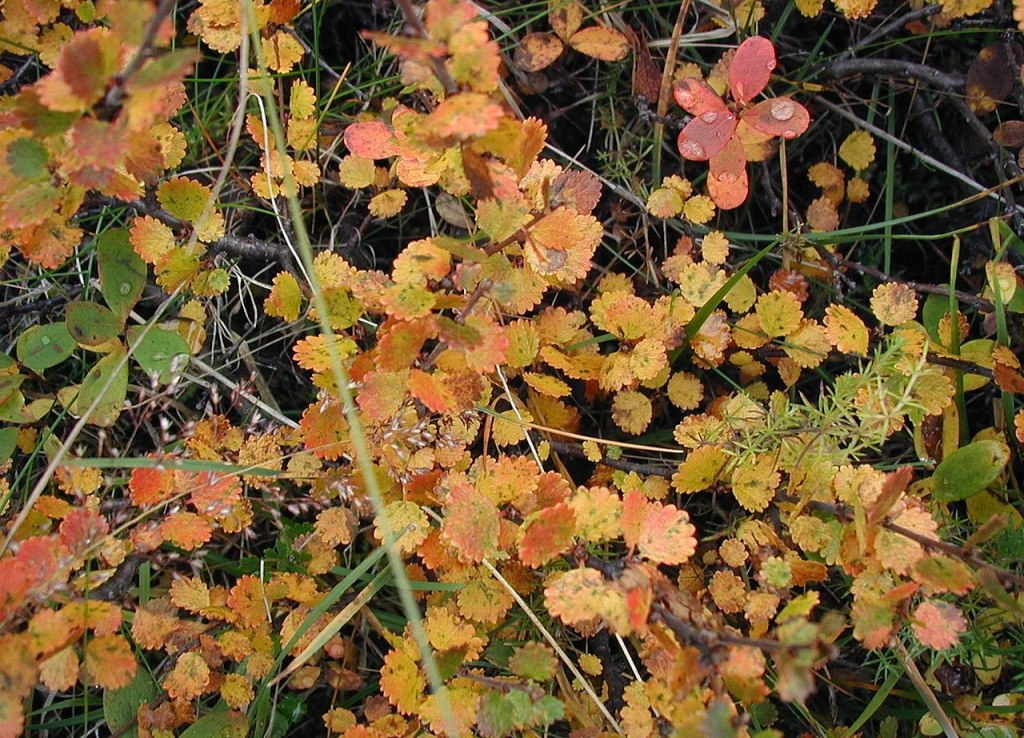
B. nana or Dwarf Birch
A prostrate deciduous shrub typically associated with flat or gently sloping blanket bog on peat depths of more than 2 m; it may have been restricted to this habitat in Britain by historical land management e.g. burning or overgrazing by sheep and Red Deer Cervus elaphus. It is found occasionally in wet and dry heath, growing on better drained, shallower or gravelly mineral soils and amongst scree and rock crevices on steeper ground.
B. nana is easily overlooked when suppressed by heavy browsing and may have previously been under-recorded in more remote locations. New records made this century show its overall range as currently stable, but this taxon is declining locally due to a combination of heavy browsing, moorland burning and climate change effects. In Scotland it is being planted as part of peatland restoration schemes. The discovery of fossil remains at the southernmost native location in Britain on Widdybank Fell, Upper Teesdale (County Durham) confirms its continuous presence over the past 12,000 years (Hutchinson, 1966).
